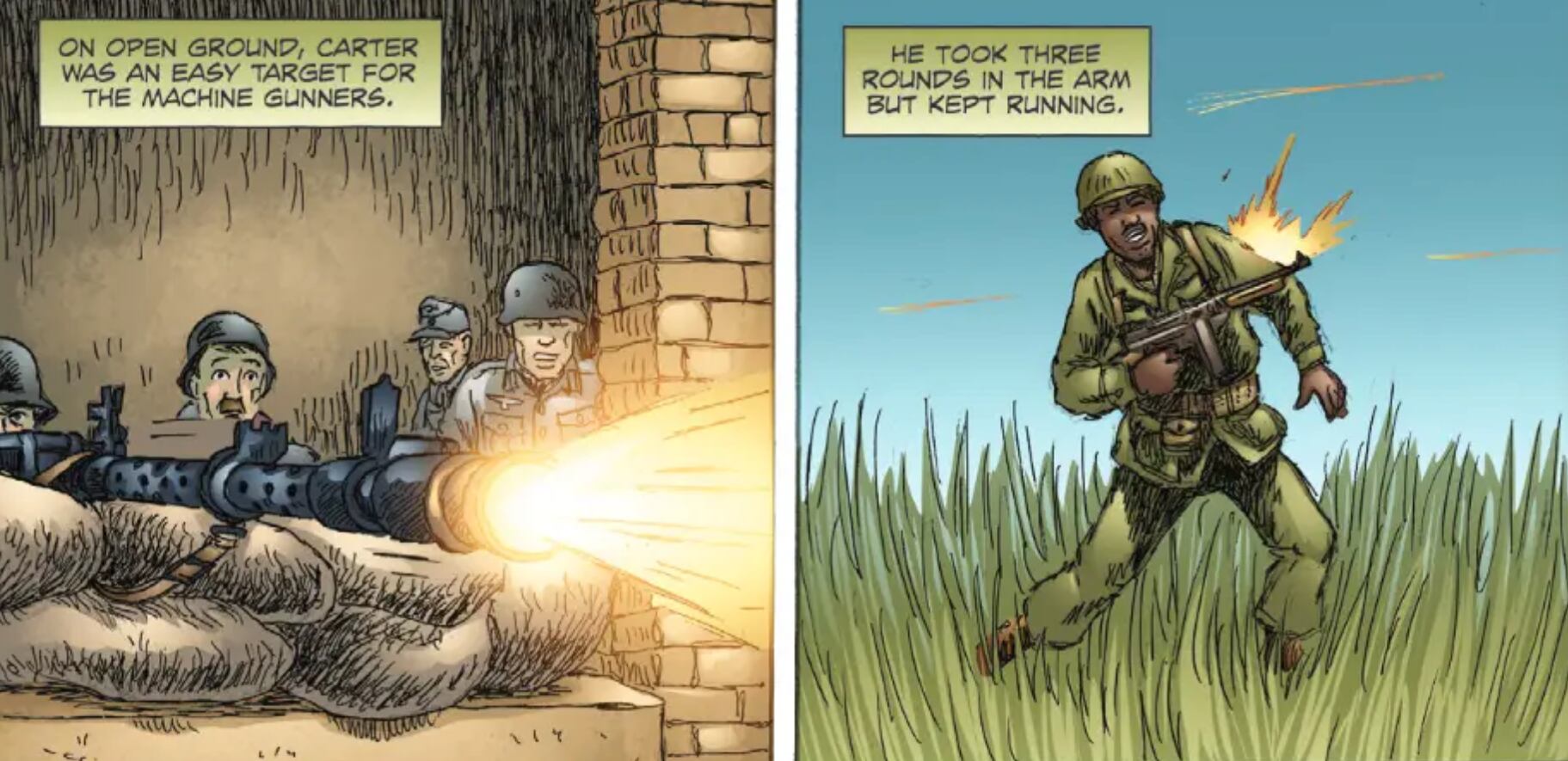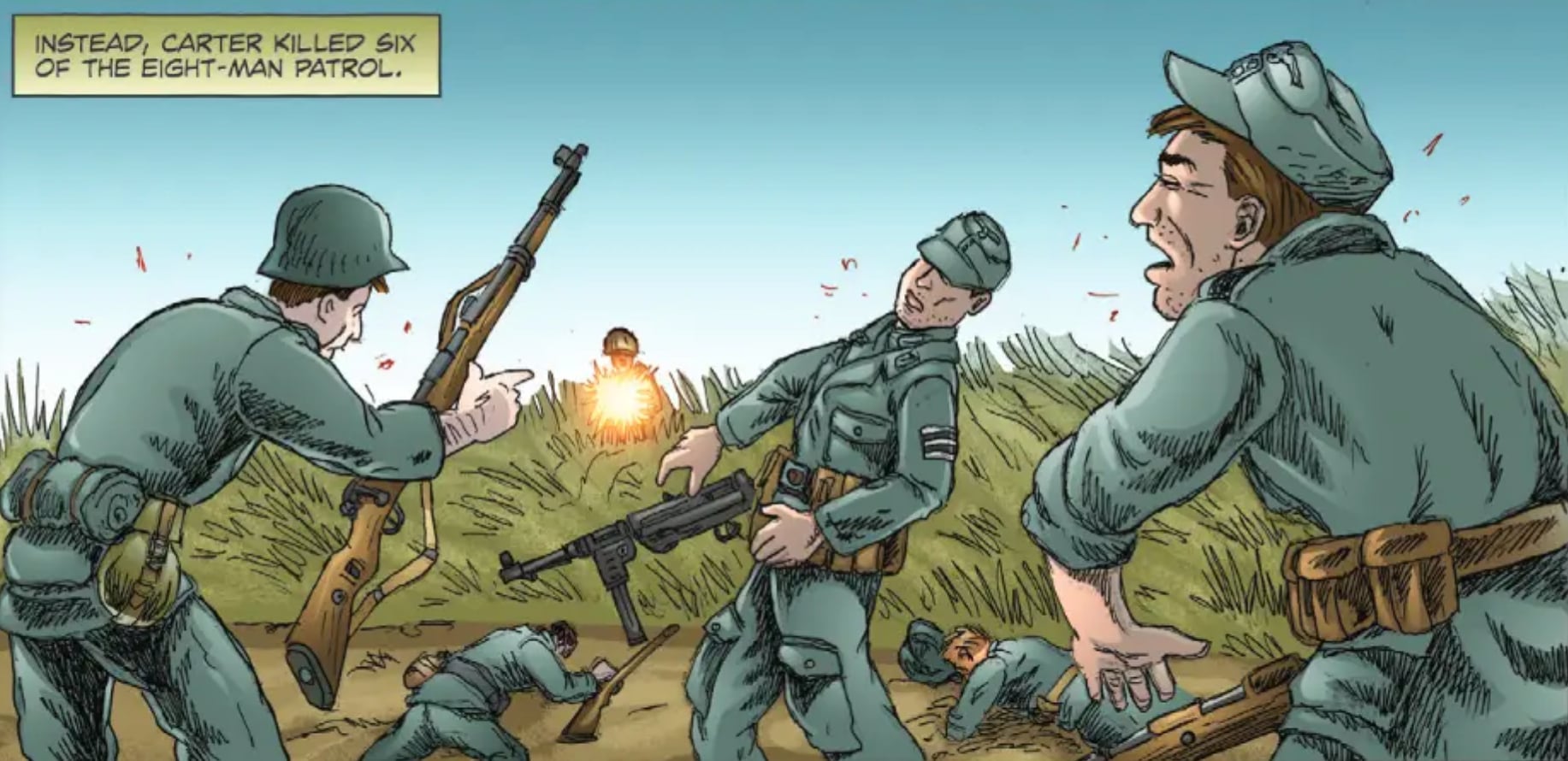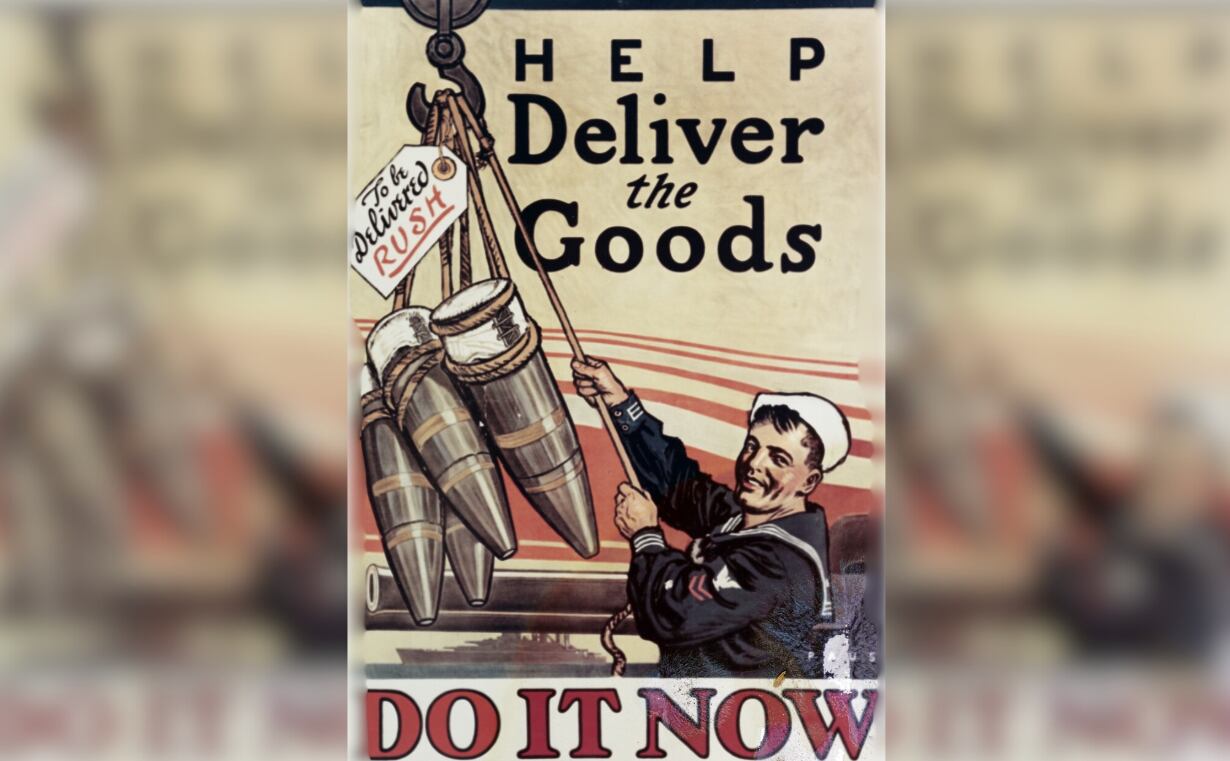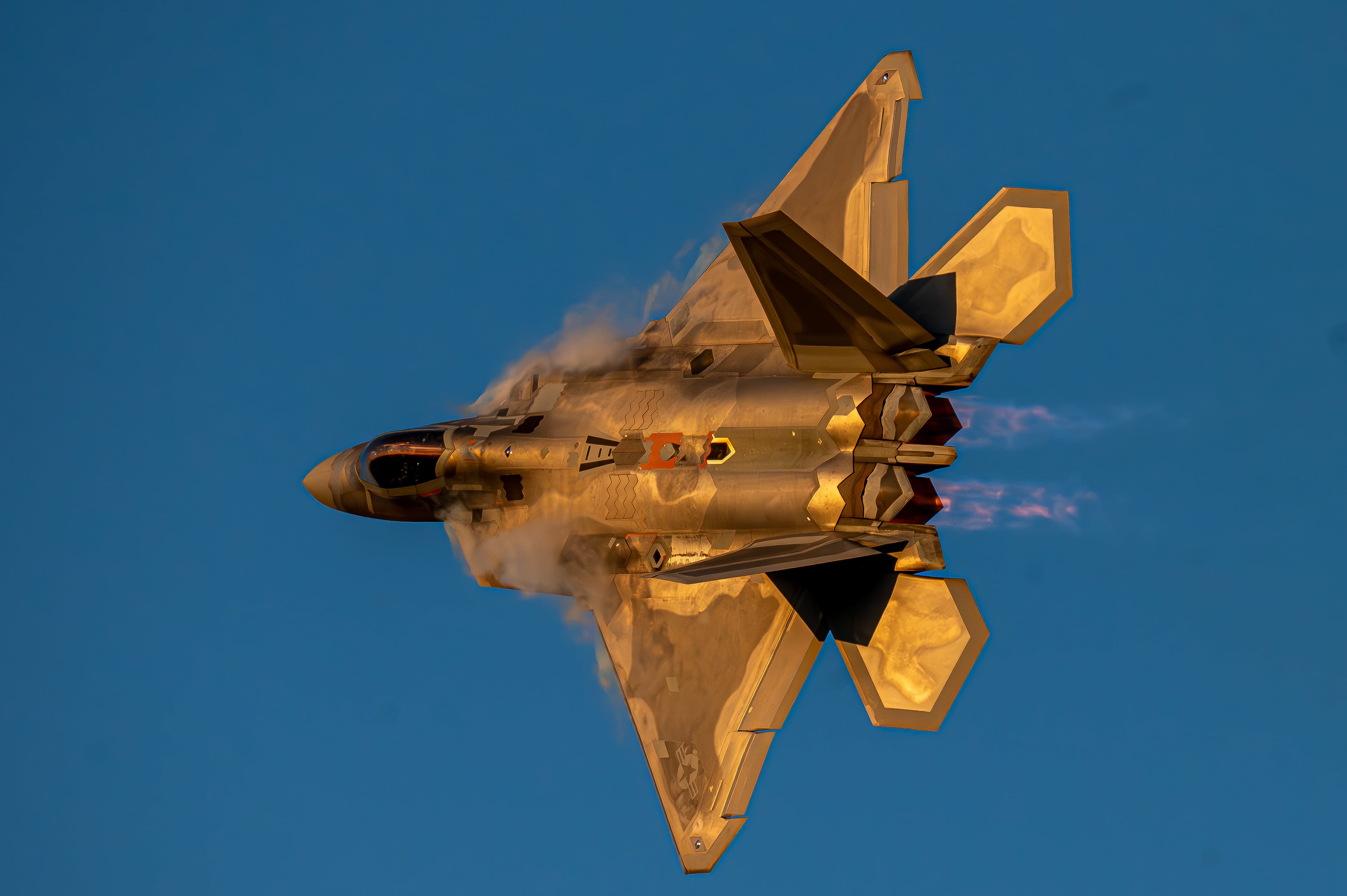A new graphic novel from the Association of the United States Army brings to life the story of a soldier who stood alone in the line of fire to protect other members of his unit.
Born in California, Edward Carter Jr. moved to India as a youth with his father, a missionary. Years before joining the U.S. military, Carter ran off to serve as a 15-year-old in a Chinese unit fighting against Japanese invaders. He later went on to fight alongside anti-fascist forces in Spain against Gen. Francisco Franco, according to Black History in America.
Carter would eventually enlist in the U.S. Army just before the outset of World War II, rising to the rank of staff sergeant before volunteering to serve with the 56th Armored Infantry Battalion, an all-Black unit deployed to Germany.
In March 1945, Carter’s unit was approaching the Rhine River when it was ordered to divert to Mannheim — towards the town of Speyer — to secure one of the remaining intact bridges. As the Americans advanced, heavy fire from Axis forces hindered progress. Reacting quickly, Carter opted to dismount from the now-crippled tank on which he and his men were riding and lead a small number of troops in a charge toward the Nazis.
“Staff Sergeant Carter and his squad took cover behind an intervening road bank,” his Medal of Honor citation reads. There, he “volunteered to lead a three-man patrol to the warehouse where other unit members noticed the original bazooka fire.”

Advancing under heavy machine gun fire, one soldier in Carter’s company was killed instantly. Carter then ordered the other two to seek cover. As the soldiers withdrew, one was shot and killed, the other wounded. Carter pressed on alone, however, despite being shot three times.
“He continued and received another wound in his left leg that knocked him from his feet,” his award citation continues. “As Staff Sergeant Carter took wound tablets and drank from his canteen, the enemy shot it from his left hand, with the bullet going through his hand.”
For two hours Carter took cover, hidden from sight directly next to the enemy’s fortification. Eight German soldiers eventually emerged to pursue the soldier with the intent of taking him prisoner. Carter then appeared from cover and killed six of them. The other two surrendered, according to the citation, and would later provide intel on enemy movements.

“Carter’s extraordinary heroism was an inspiration to the officers and men of the 7th Army, Infantry Company Number 1 (Provisional) and exemplify the highest traditions of the military service,” the citation concludes.
For his actions, Carter was originally awarded a Bronze Star, Distinguished Service Cross and a Purple Heart, according to Army records.
Upon returning stateside, Carter hoped to continue his military career, but was ruled to be ineligible because of his previous ties to the Chinese and Spanish conflicts.
Carted passed away in 1963. For decades, he was counted among the hundreds of Black service members excluded from Medal of Honor recognition. That was fixed in 1997.
“Finally, on Jan. 13, 1997, a wrong was addressed as seven black heroes joined those ranks,” Army records note. “Our state proudly associates with one of them, a California native, the late Army Staff Sgt. Edward Allen Carter Jr. His is a story of a true military man with more than his share of tribulations. Today, the California State Military Museum celebrates his victory over all challenges except that of being physically here to receive our thanks.”
Read the full Edward Carter Jr. graphic novel here.
Sarah Sicard is a Senior Editor with Military Times. She previously served as the Digitial Editor of Military Times and the Army Times Editor. Other work can be found at National Defense Magazine, Task & Purpose, and Defense News.
In Other News














